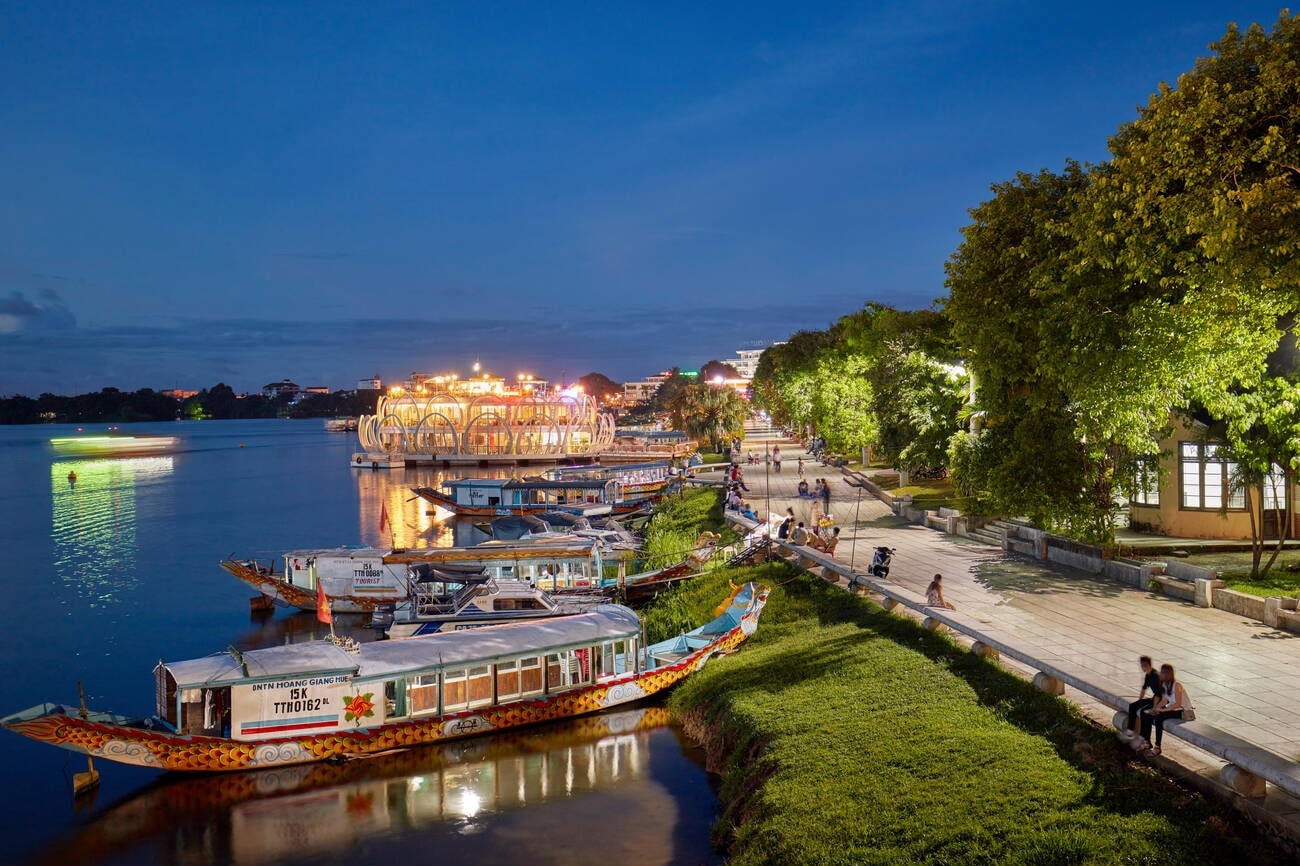Exploring the Heart of Imperial Vietnam: A Comprehensive Travel Guide to Hue, Vietnam
Nestled along the banks of the serene Perfume River, Hue stands as a testament to Vietnam’s rich history and cultural heritage. As a former imperial capital, Hue offers an enticing blend of majestic architecture, verdant landscapes, and a unique cultural charm that captivates every traveler. Whether you're a history buff, a culture enthusiast, or someone seeking tranquility, Hue has something to offer. This travel guide to Hue, aims to take you through the must-see attractions, hidden gems, things to do in Hue, and practical tips to ensure you make the most of your visit.
Historical Significance and Cultural Heritage
Hue’s historical significance is immense, having been the imperial capital of the Nguyen Dynasty from 1802 to 1945. This era left a lasting legacy that can still be explored today. The Citadel, a UNESCO World Heritage site, is a sprawling complex of palaces, temples, walls, and gates, reminiscent of the grandeur of imperial times. The Forbidden Purple City, once the private residence of the emperor, is a highlight within the Citadel, though much of it was damaged during the Vietnam War.
Another historical treasure is the Tombs of the Emperors. These grand mausoleums, located on the outskirts of the city, reflect the grandeur and artistic flair of the Nguyen Dynasty. The tombs of Emperor Minh Mang, Emperor Khai Dinh, and Emperor Tu Duc are particularly noteworthy for their architectural styles, each offering a glimpse into the past and a serene environment to reflect on Vietnam’s history.
Top Things to Do in Hue
Visit the Imperial Citadel: The heart of Hue's historical legacy, the Imperial Citadel, should be the first stop on your list. Wander through the vast courtyards, admire the intricate details of the structures, and imagine the days when emperors and mandarins walked these grounds.
Explore the Perfume River: A boat trip on the Perfume River is a quintessential Hue experience. The river offers a peaceful journey through the city, allowing you to see sights such as the Thien Mu Pagoda and the Dong Ba Market from a unique perspective. Sunset cruises are particularly popular for their picturesque views.
Discover the Royal Tombs: Each royal tomb in Hue offers a unique glimpse into the past. The tomb of Khai Dinh is renowned for its blend of Vietnamese and European architectural styles, while the tomb of Minh Mang is surrounded by tranquil gardens and lakes.
Marvel at Thien Mu Pagoda: As one of the oldest and most significant pagodas in Vietnam, Thien Mu Pagoda offers stunning views over the Perfume River and a serene atmosphere. Its seven-story tower is an iconic symbol of Hue.
Stroll Through Dong Ba Market: For a taste of local life, head to Dong Ba Market. Here, you can find everything from fresh produce and spices to traditional Vietnamese clothing and handicrafts. It's a vibrant place to explore and pick up souvenirs.
Sample Local Cuisine: Hue is famous for its unique culinary heritage. Don’t miss out on dishes like Bun Bo Hue (spicy beef noodle soup), Banh Beo (steamed rice cakes), and Com Hen (clam rice). The local street food is both delicious and affordable.
Off-the-Beaten-Path Attractions
Thanh Toan Bridge: Located a short drive from the city center, this charming Japanese-style bridge offers a tranquil escape from the hustle and bustle of Hue. It's a great spot for photography and a peaceful stroll.
Bach Ma National Park: Nature enthusiasts will appreciate a day trip to Bach Ma National Park, located about 40 kilometers from Hue. The park boasts lush forests, cascading waterfalls, and hiking trails that offer panoramic views of the surrounding countryside.
Vong Canh Hill: For stunning panoramic views of the Perfume River and the royal tombs, head to Vong Canh Hill. It's a perfect spot for a picnic or simply to enjoy a quiet moment surrounded by nature.
Practical Travel Tips
Best Time to Visit: The ideal time to visit Hue is from March to August when the weather is warm and dry. Avoid the rainy season from September to December, as the city can experience heavy rainfall and occasional flooding.
Getting Around: Hue is a relatively compact city, and many attractions are within walking distance. For further destinations, consider renting a bicycle or motorbike, or hire a taxi for convenience.
Accommodation: Hue offers a range of accommodations from budget hostels to luxury resorts. Staying near the Perfume River provides easy access to major attractions and picturesque views.
Language and Currency: Vietnamese is the primary language, but many people in tourist areas speak basic English. The local currency is the Vietnamese Dong (VND), and it's advisable to carry cash as not all places accept credit cards.
Conclusion
Hue is a city that seamlessly blends historical grandeur with natural beauty and a rich cultural heritage. From the majestic Imperial Citadel to the tranquil Perfume River, there is no shortage of fascinating things to do in Hue. This travel guide to Hue, Vietnam, aims to provide you with a comprehensive overview to make your visit memorable. So, pack your bags, immerse yourself in the history and culture, and get ready to explore one of Vietnam’s most enchanting cities.
Hue awaits with open arms, ready to share its stories, sights, and flavors with you.



Comments
Post a Comment